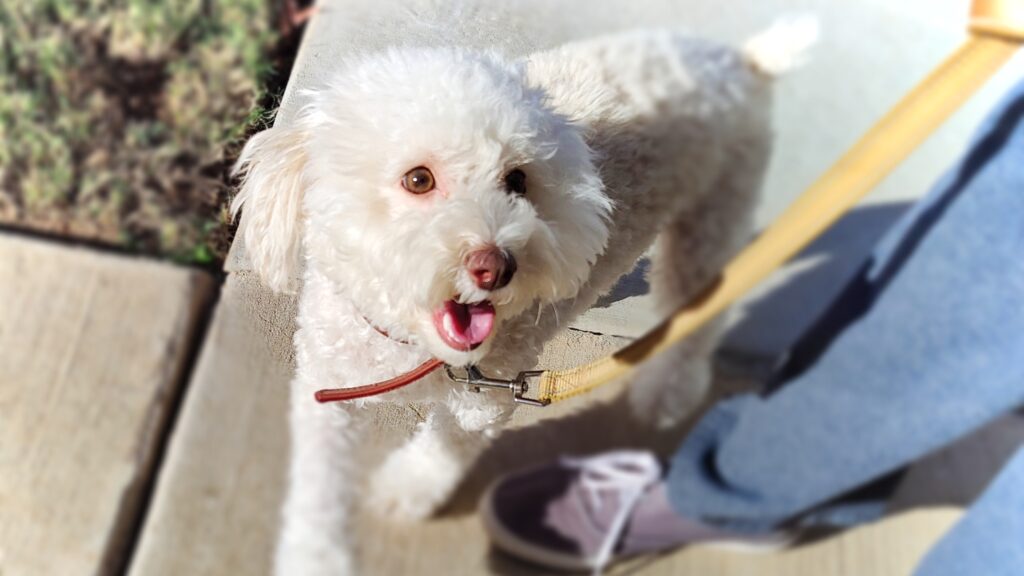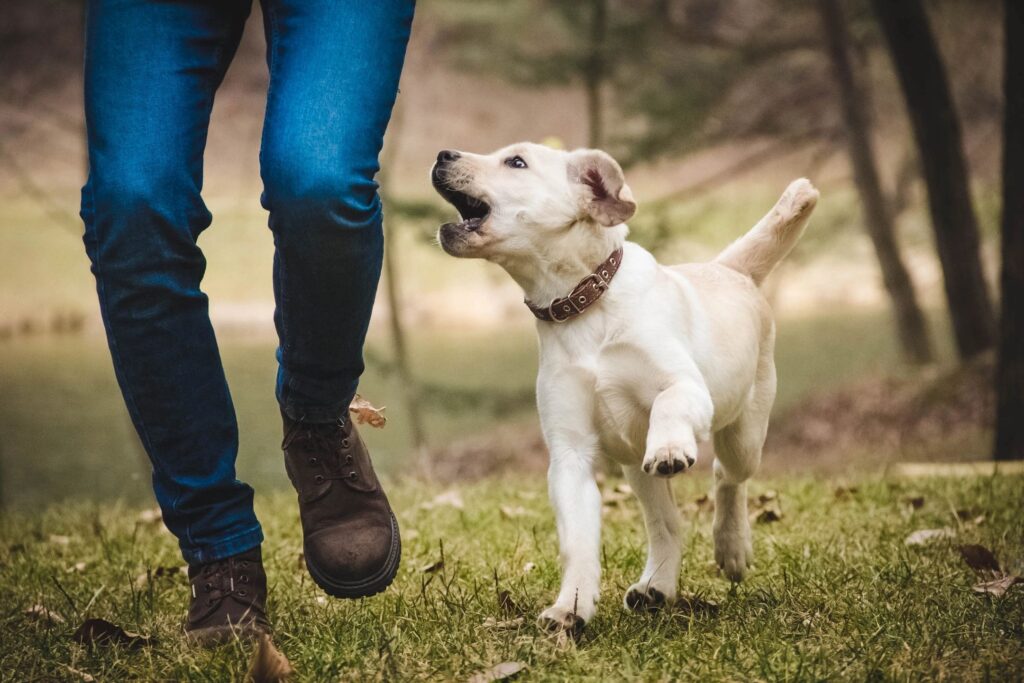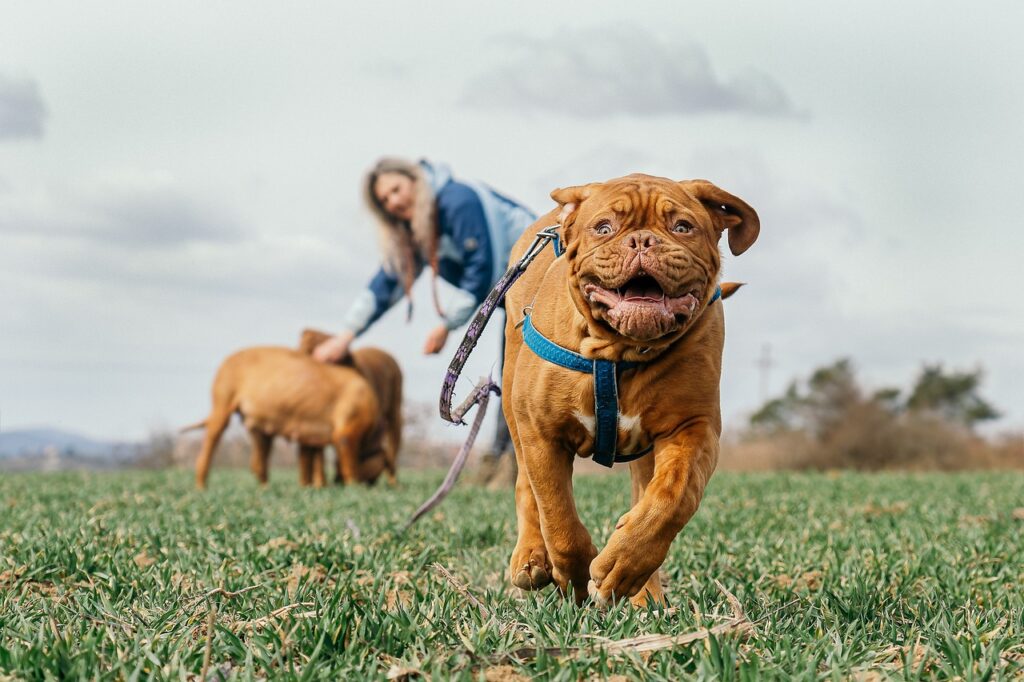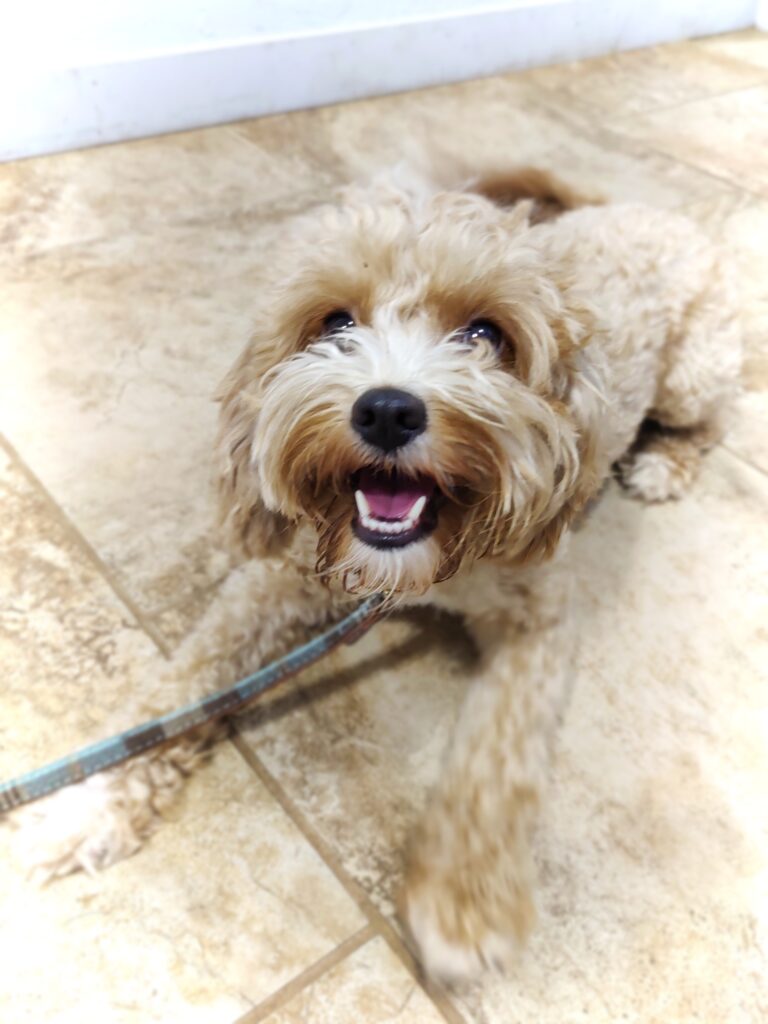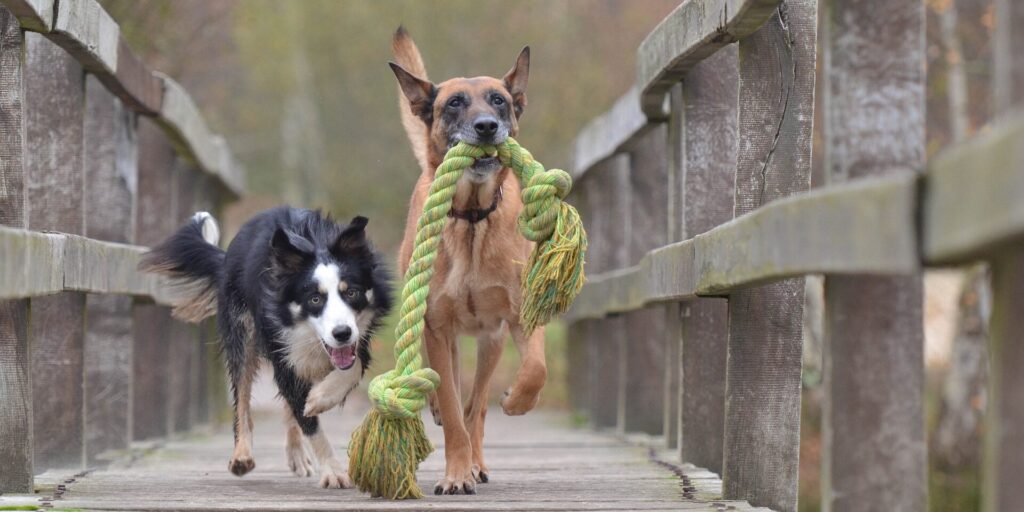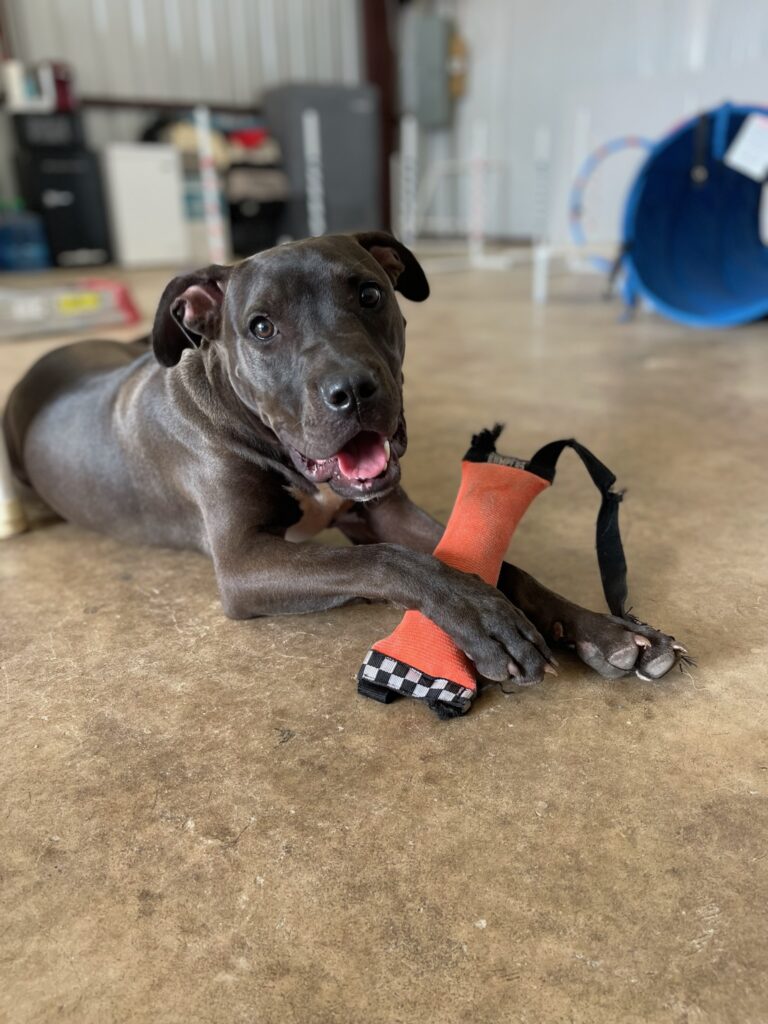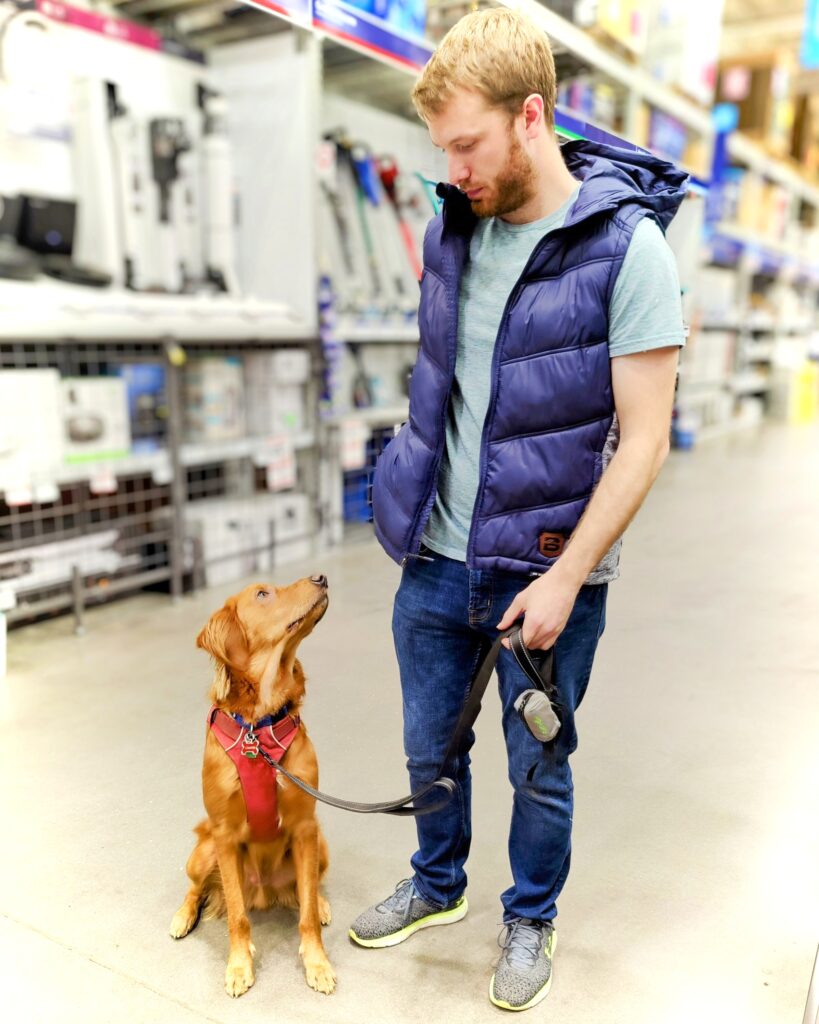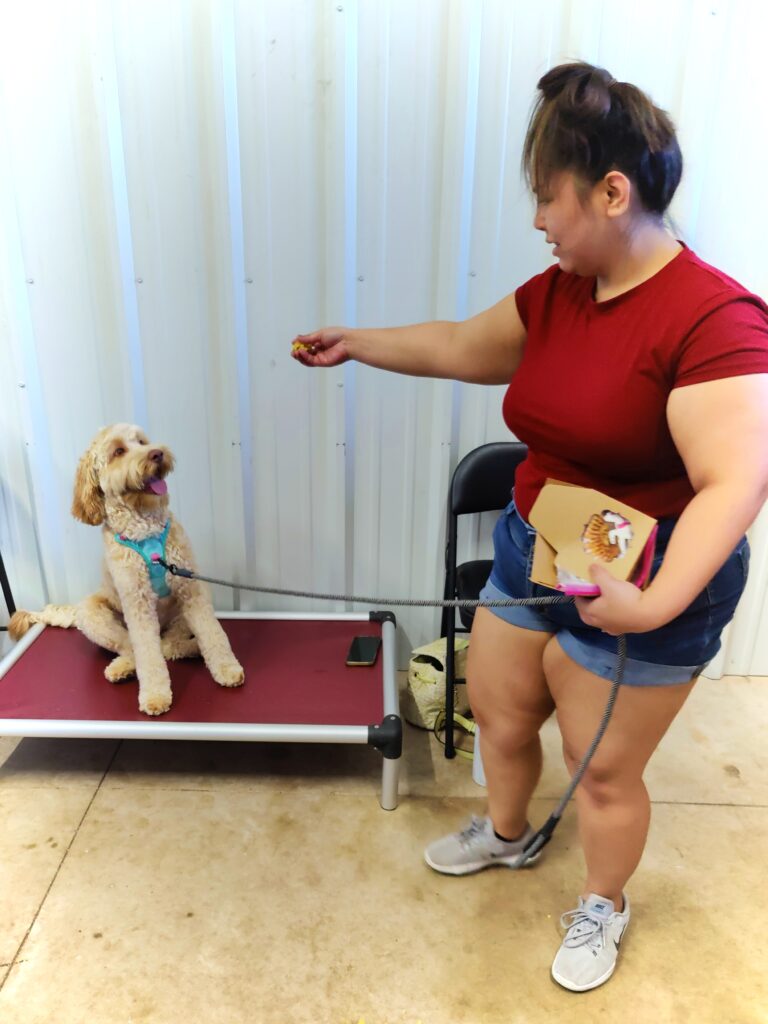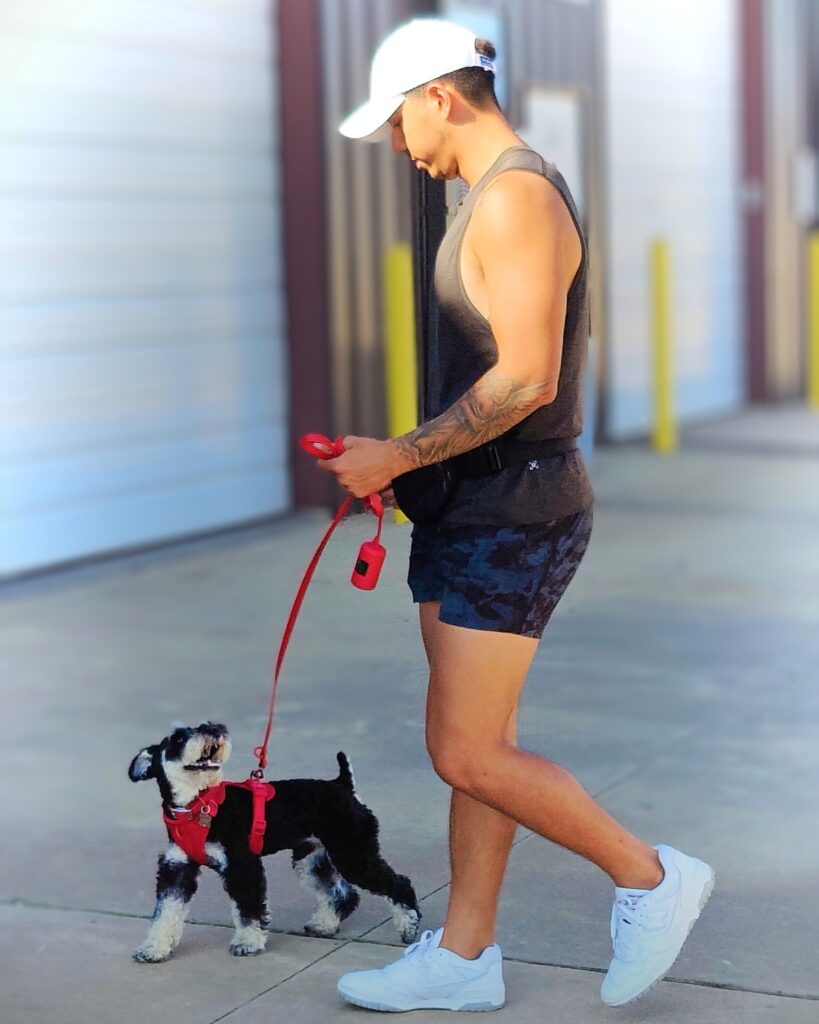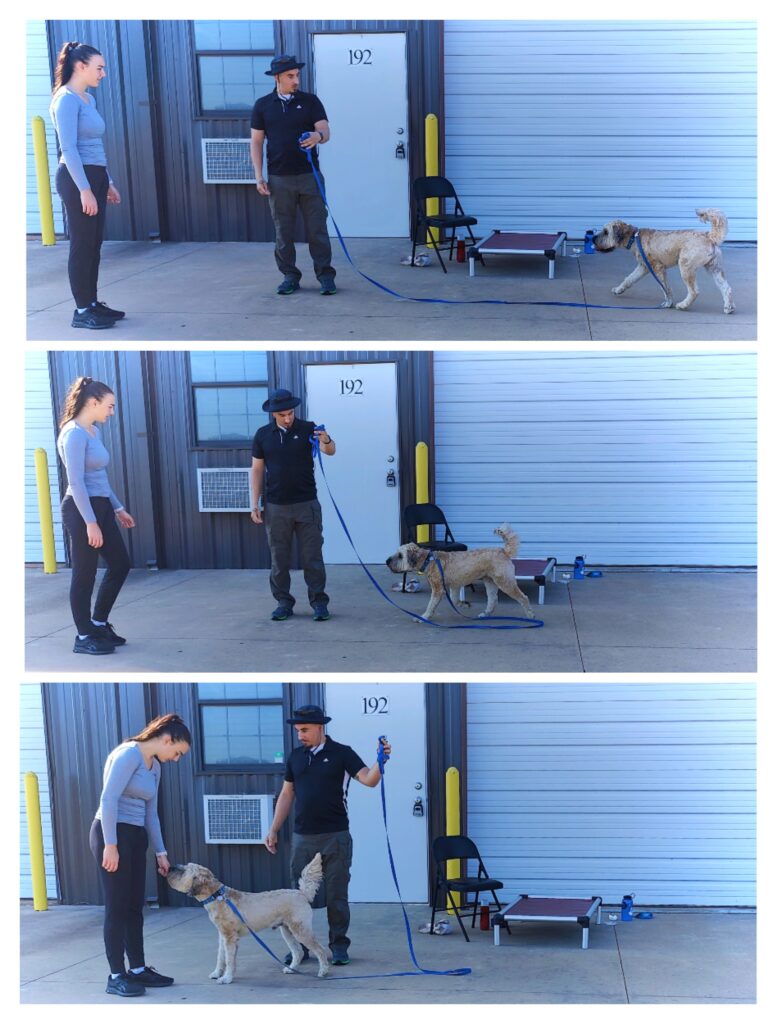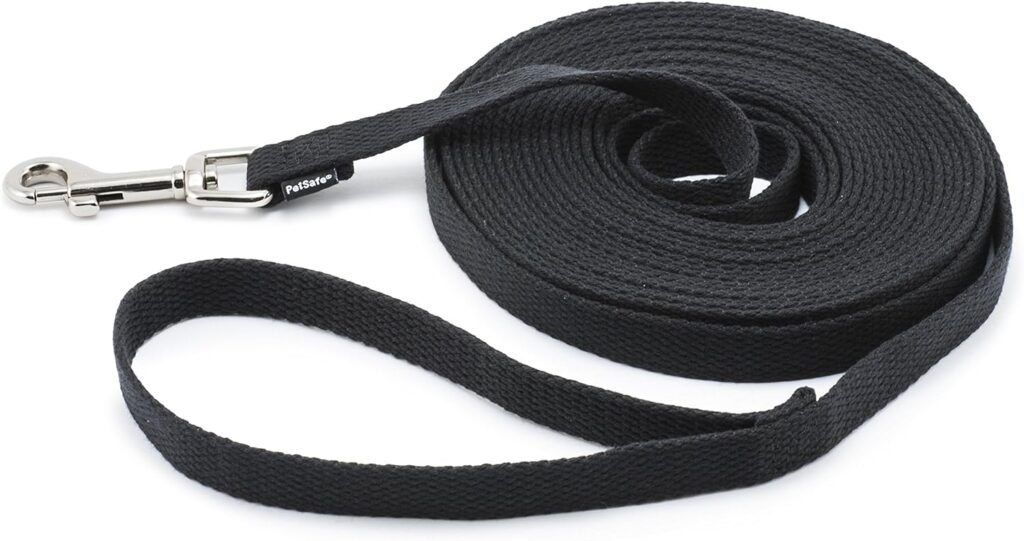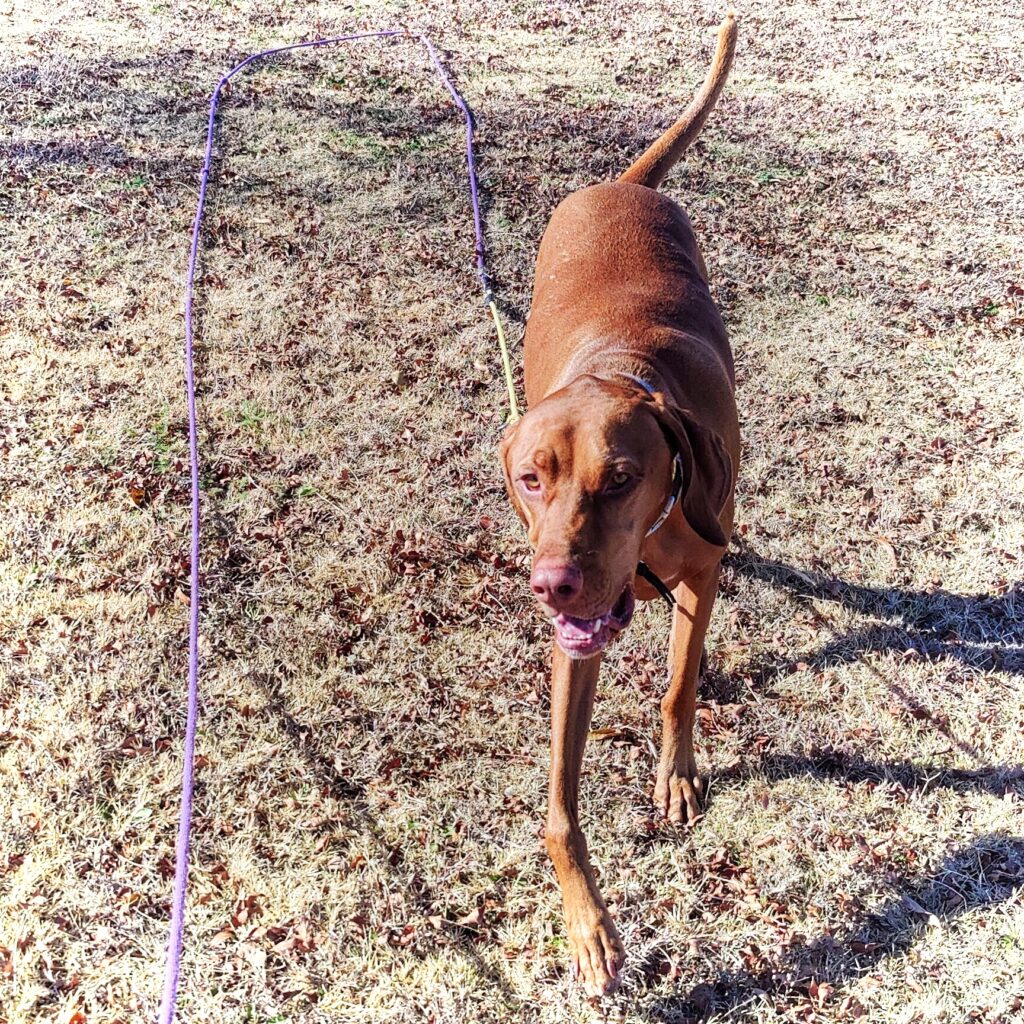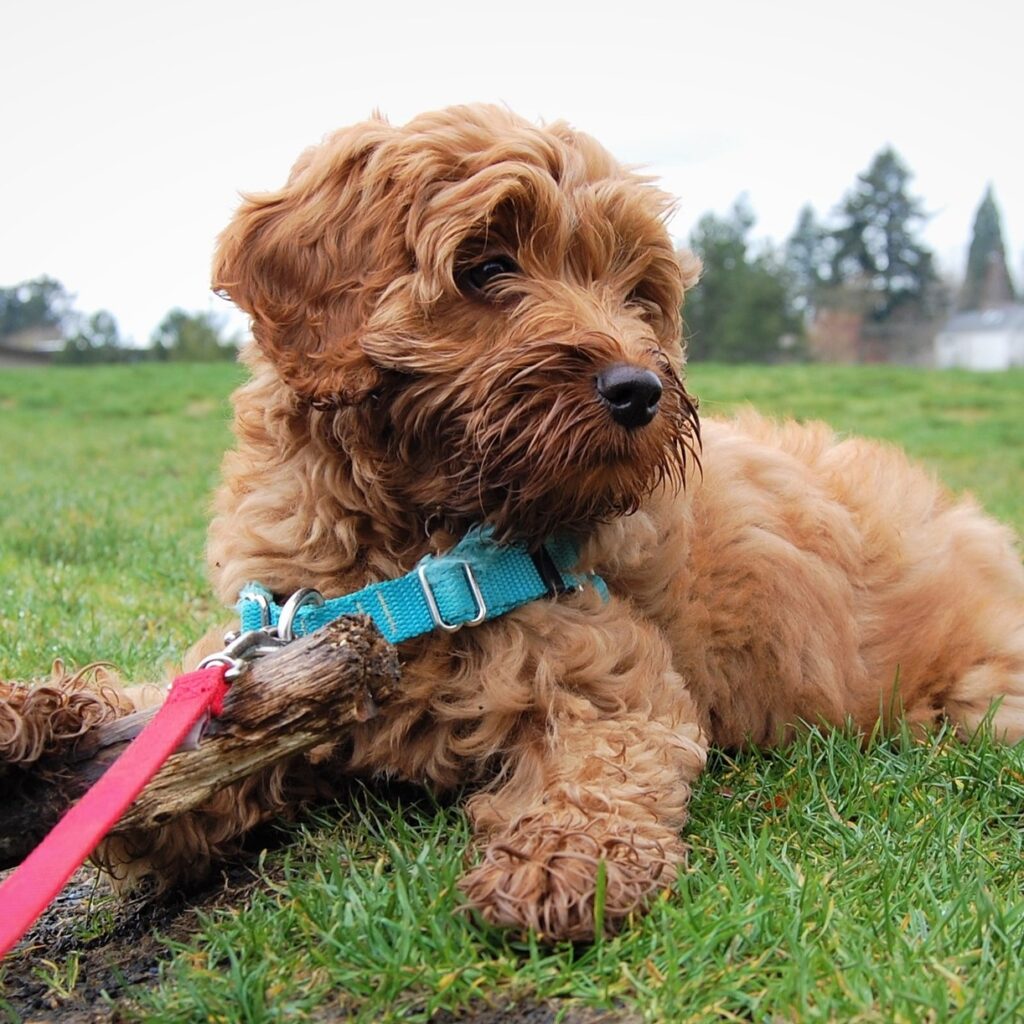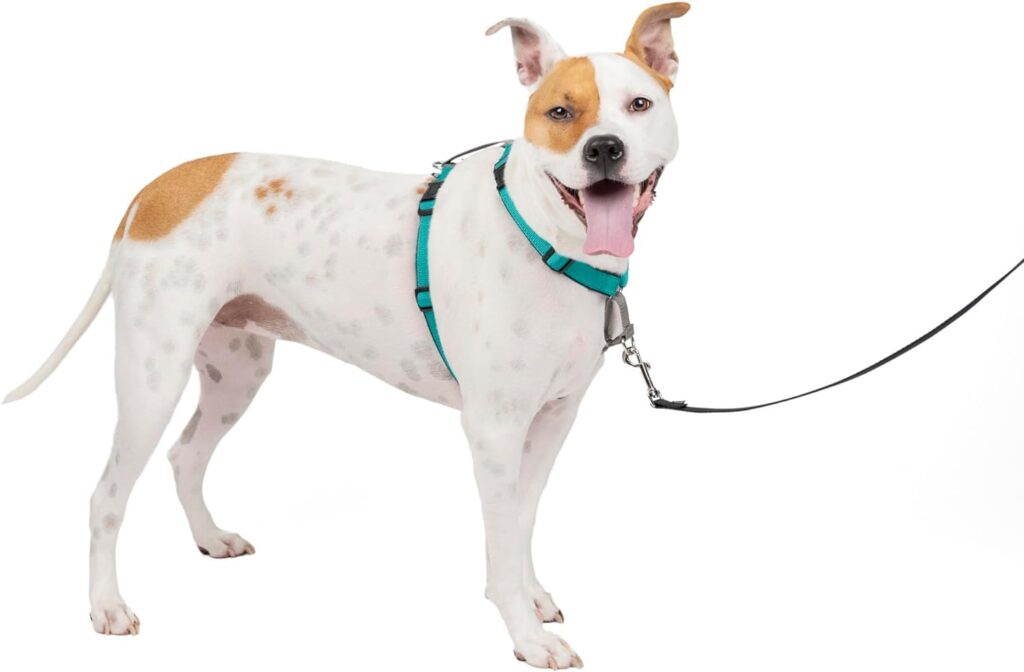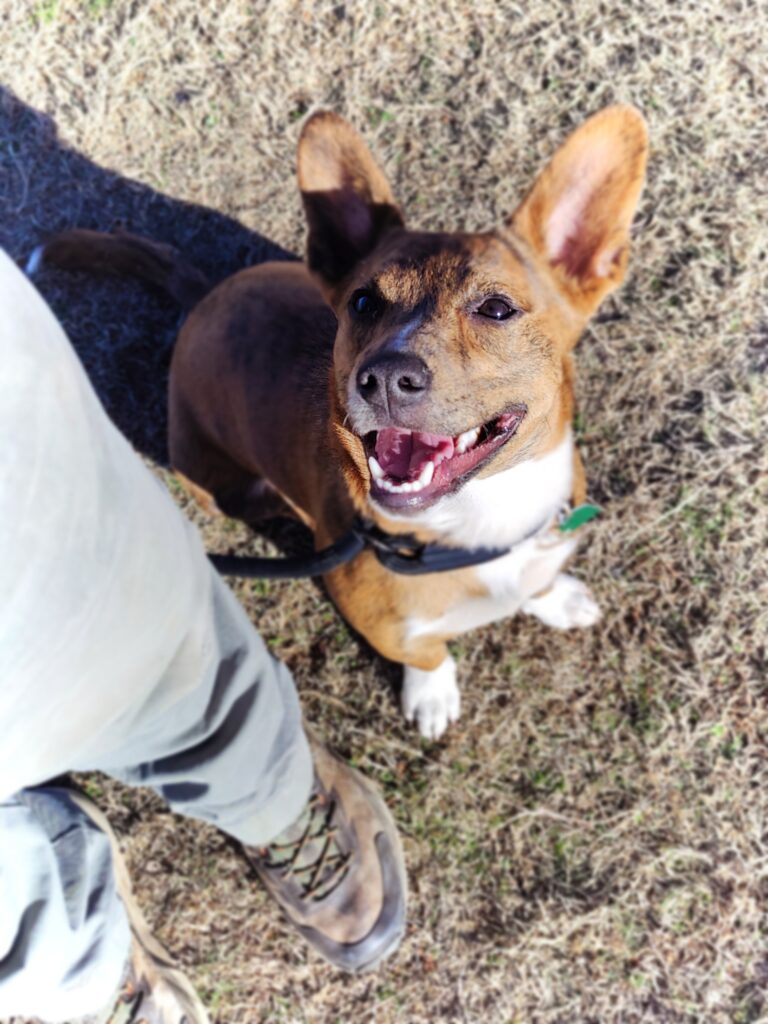Having a dog pulling you on leash can ruin a good walk. Walking your dog can be fun and provide enrichment, but getting yanked around gets annoying, and in many cases painful.
For our dogs, leashes are a part of their lives, but they can cause the most frustration. Dogs are not born with leashes and it’s up to us to work with them on leash manners.
If you’re tired of your dog pulling you, take a look at the tips below to get started on having a loose leash walking dog.
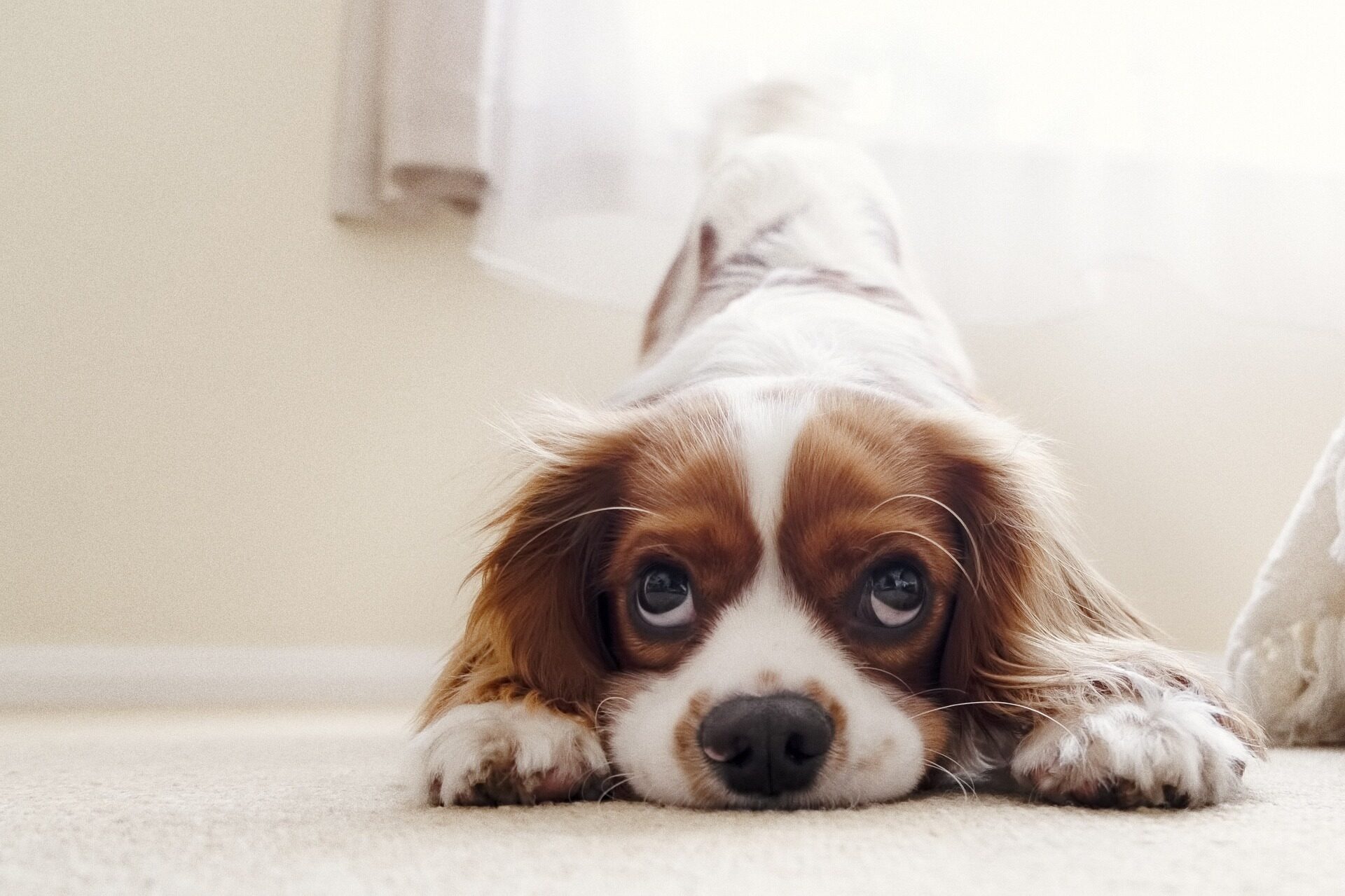
Start Inside:
The biggest tip I like to give my students is to start leash training indoors. When getting started, it’s important to consider your dog’s point of view. The great outdoors is Disneyland, and leash manners are a new skill. When you learn something new, does it help to have a bunch of distractions around? Trying to start teaching a dog to walk nicely on leash outside is like teaching a kid in a candy store their numbers for the first time.
When teaching your dog to walk next to you, inside is a much better environment to get started in. You can control more factors inside and they are likely adjusted to your home already.
If you feel like teaching your dog the basics inside your home is making you want to rip out your hair, talk to your trainer about options. Getting coaching and feedback on training your dog in your home could be what you need to get on track. Some dogs need the extra time and attention to be taught how to learn and a pro can help you with this.
Pro-tip: Start teaching leash walking without a leash inside first. Teach your dog that when they stand next to you and walk next to you, you will give them a treat. When you feel like they’re getting better, add the leash in.
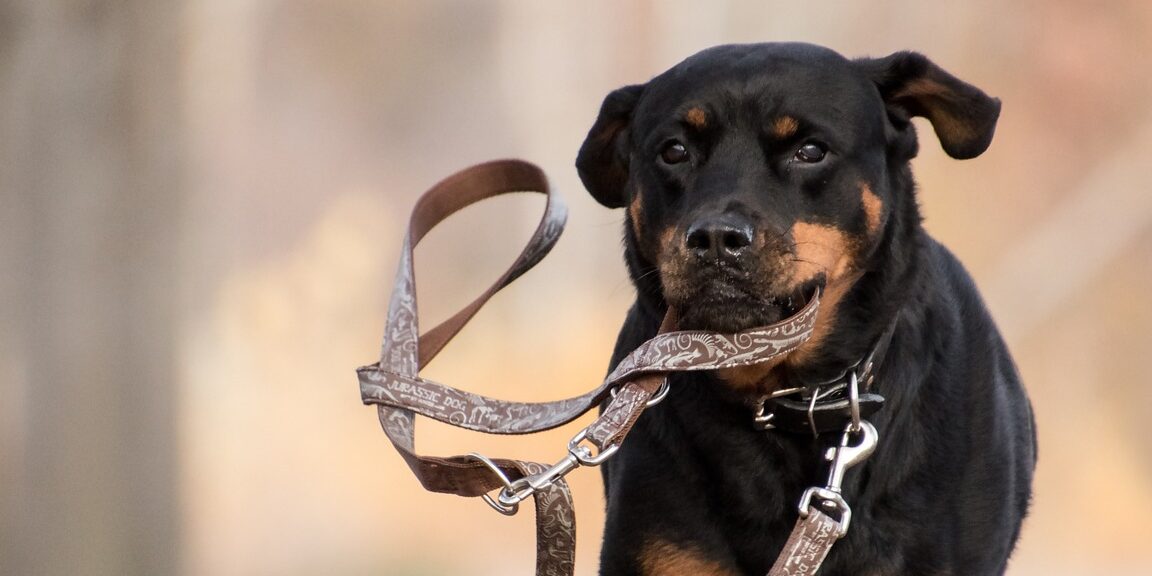
Change the associations attached to your dog’s leash:
When you pull your leash out, does your dog go bananas? This can make leash walking manners difficult even before you go outside. Dogs learn very quickly that leash means going out and doing fun things. They can start to anticipate the excitement and bounce off the walls.
You want to get your leash out more often than you think is necessary. In the beginning, your dog is going to be over the moon excited, but if you get out your dog’s leash and then don’t go for a walk, your dog will start to learn that maybe the leash isn’t as exciting as they thought it was.
Keep things simple and start by moving your dog’s leash from the hook to a counter and back again at random points throughout the day. As your dog settles down and realizes this isn’t something to get worked up about, you can practice clipping the leash to them and let them wear it with supervision around the house before taking it off and hanging it back up again.
This may take some time, so be patient. If you feel like your dog is still having trouble settling down when they see the leash and they are in danger of spinning out of control, talk to your trainer about how to break this exercise down into smaller pieces and work on calming techniques to help them cope with the excitement.
Pro-tip: Start to pair leash time with training sessions in the house. While training sessions are fun and exciting, if you work on tasks such as impulse control, focus, and settle, your dog may start to understand that when they wear their leash it is time to focus on you.
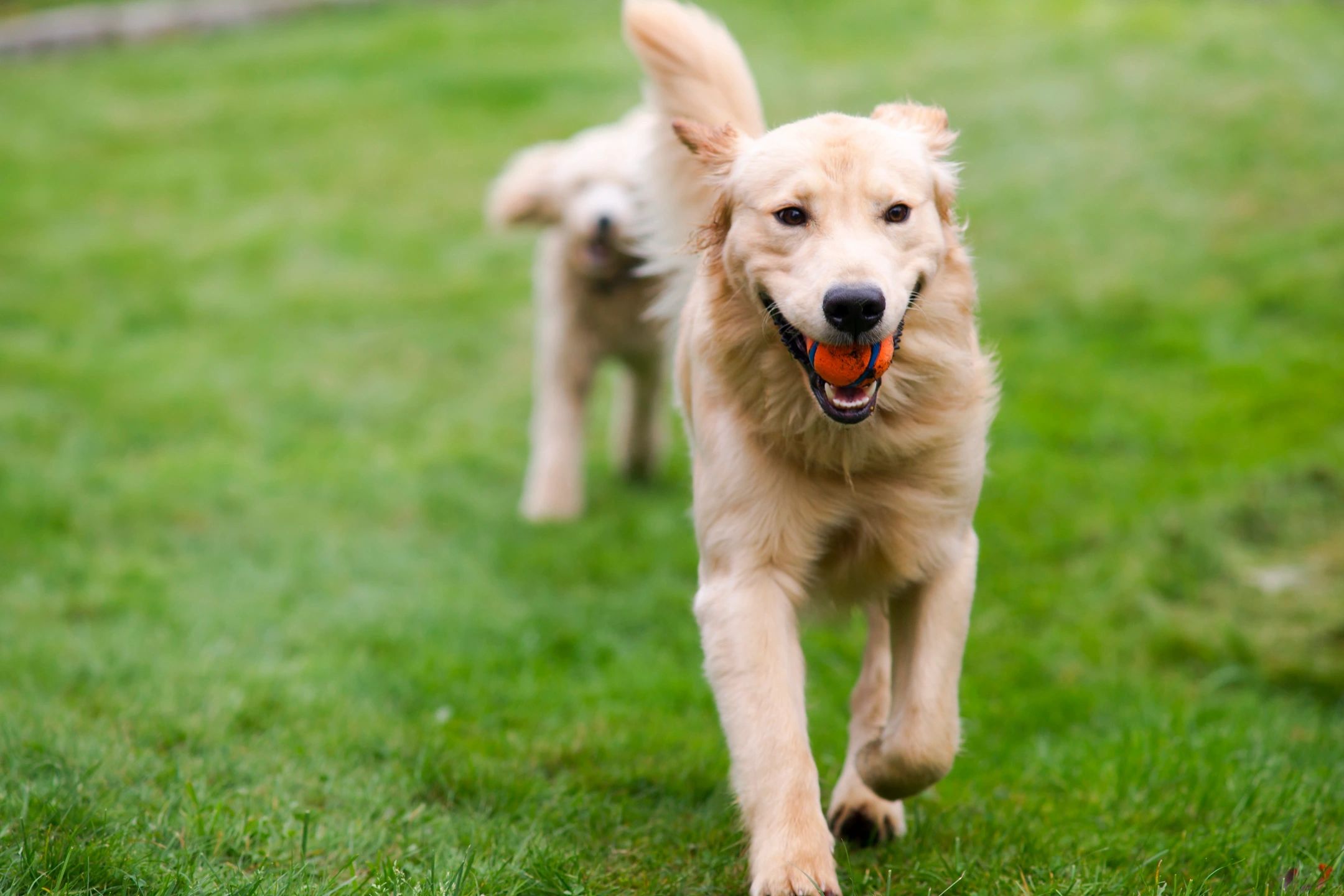
Let your dog have recess first:
A dog’s natural gait is faster than ours. This means leash walking can be boring to many dogs since we are so slow compared to them. If your dog has a need for speed, taking them out on a regular leash walk is not the best way to get them some much needed exercise.
Meeting a dog’s cardio and exercise needs is important. Before you attempt a walk, try to get some of your dog’s energy out first by playing ball, tug, or running around with them in the backyard.
Dogs don’t typically exercise solo very well and will have their energy needs met better if you engage with them in play time. Find an activity you both enjoy doing together and bond through some play. You’ll have fun and be more prepared to not only work on leash training, but also work on other training and life skills.
If playing with your dog sounds like a nightmare, talk to your trainer about play manners. Being able to play with your dog opens opportunities for bonding and fun. A pro can help you figure out how to best engage in play together that is fun for both of you.
Pro-tip: Finding your dog’s favorite play style is hard sometimes. Many people gravitate to games like fetch. But most dogs do not actually like to play fetch more than a few repetitions.
Some dogs live for this game, but most dogs like games where their inner hunter gets a chance to emerge. Dogs who are prey driven might enjoy tug more, or chasing a lure on a flirt pole.
Many dogs will chase a toy in order to bring it back to play more tug, not so that you’ll throw it again.
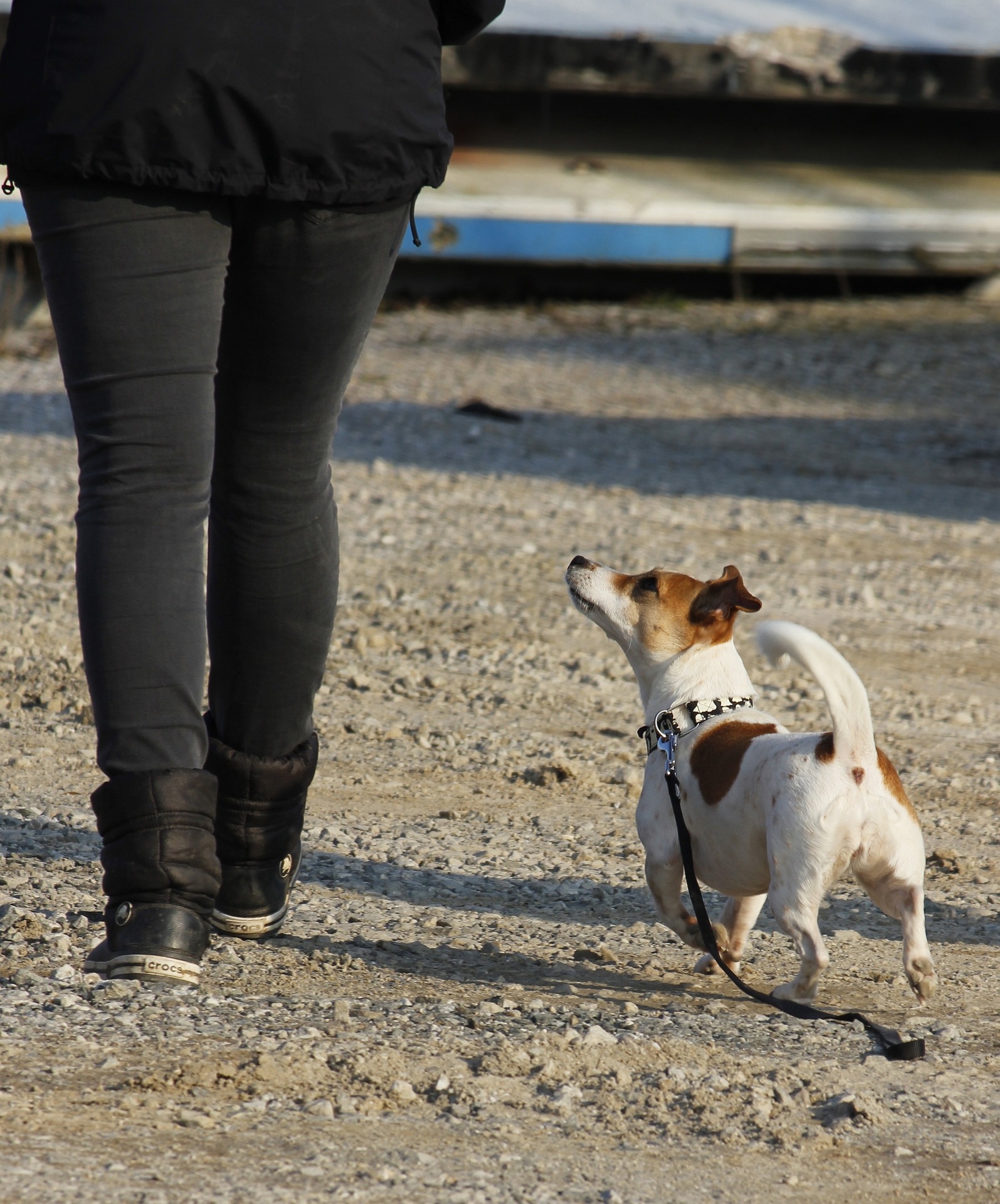
Start with offered focus:
We can get caught up in what an ideal walk with our dog is supposed to look like. We have a picture of stepping out our door and getting moving. But the secret to great leash walking is starting out by not moving at all.
When you go out your front door, the first task is getting your dog to offer you focus. This is tough for them and may take some time, but it is important to break this step down. If you hold still and your dog doesn’t connect with you, how are they going to do that while on the move?
Take some time to wait for your dog to take in the smells and sights. Stand still or sit and wait for them to turn towards you. Do your best to wait and keep your vocalizations to a minimum. We don’t want to talk too much. When your dog turns towards you, reward them with a tasty treat. If they choose to disengage after eating the treat, let them do so, but don’t go anywhere just yet. Remember to breathe and wait for them to offer you focus. When they do, reward again. Soon, you will have a dog who is focusing on you more than his environment. This sets you up for success together.
If you feel like your dog is struggling to offer you focus while outside, talk to your trainer about options for increasing focus. A pro can help you figure out the best technique for working with your dog as an individual and give you solutions faster than going it alone.
Pro-tip: When teaching leash walking or going out with your dog, take treats with you. You never know when a learning opportunity will present itself to you and your dog.
Having treats helps you teach life skills while out and about and not just at home. As your dog gets into a routine, you won’t need as many treats, but they’re always nice to have to reward good behavior, especially when the squirrels come out!
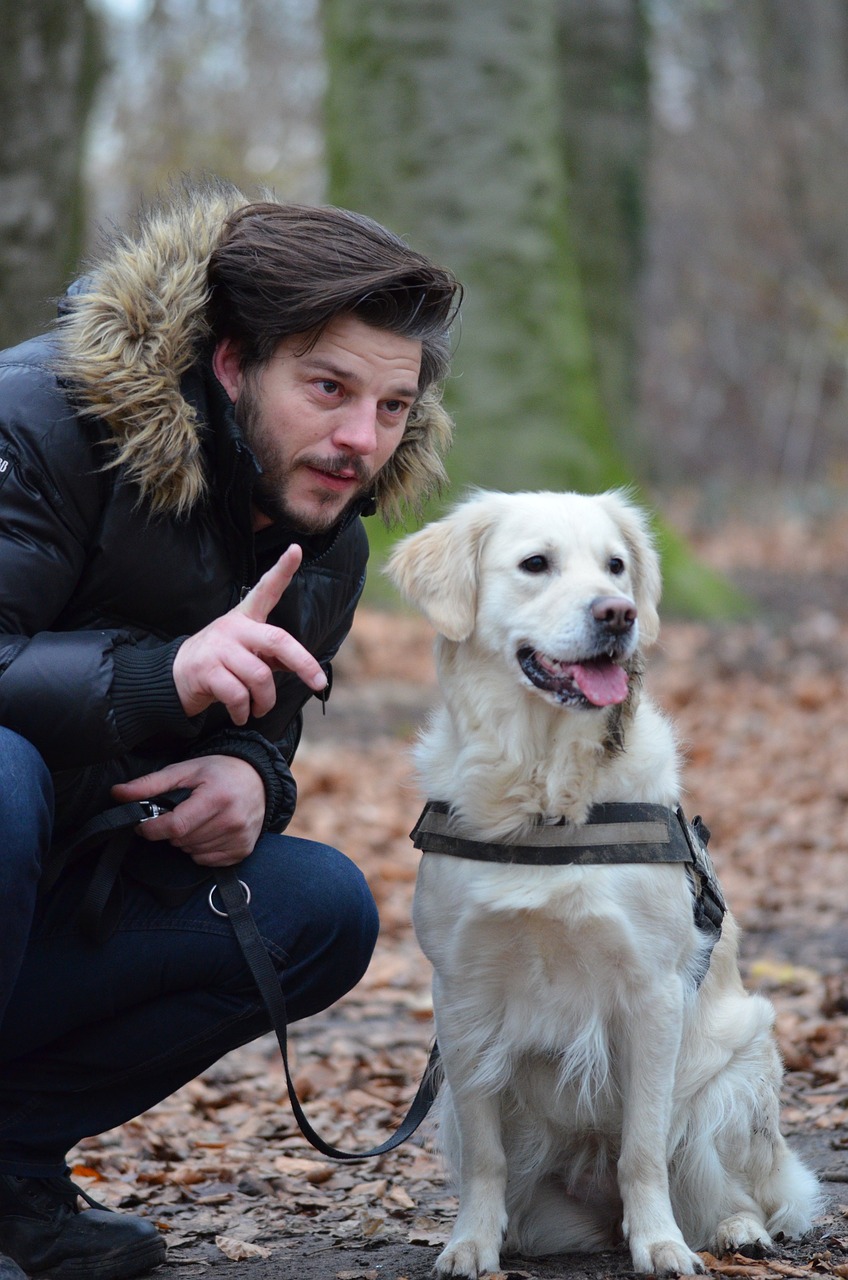
Change the way you look at a walk:
Think about the reason you walk your dog. Is it to get them exercise? Is it to get you exercise? Is it both? What about enrichment for your dog by letting them take in all the smells?
When we take our dogs out, we can have this preconceived notion of what the perfect walk looks like. The leash is loose, the dog and human are in sync, and both are enjoying the great outdoors together in the neighborhood.
But what do you and your dog really need?
Trying to walk a dog on a four to six foot leash in a neighborhood can feel like torture for both parties involved. The dog moves faster and does not understand the concept of sidewalks and paths. The human moves slower, has a desire to stay out of traffic, and keep everyone safe.
Dogs need to move their bodies, follow smells, and be dogs. Doing this on a shorter leash in the neighborhood isn’t the best way.
My favorite suggestion for dogs and humans in need of a change is to take the dog to a field with few to no obstacles and use a long line to let the dog explore safely. Longlines are a dream to have, not just for going on adventure walks, but also for training safely with more distance and distraction. They are one of the best training tools to have when working towards off-leash reliability.
The key to a successful adventure walk is making sure you choose a good location. Be mindful of human and vehicle traffic, the local flora and fauna in the area, and know how to safely maneuver your long line.
There is nothing quite like letting your dog explore smells to their heart’s content as you walk with them at your own pace. It is one of my favorite ways to let dogs be dogs with less risk, and dogs can get more worn out with this type of walk since they are getting more of their needs met.
When choosing a longline for the first time, look at the material you are purchasing. A cotton weave may feel nicer on your hands but can soak up a lot of water. Waterproof and water-resistant longlines are good for quick clean up but can get heavy. Nylon comes in different thicknesses, and you want to make sure the line is thick enough not to slice your hand if the line slips in your grasp. Lastly, you can choose between a round rope style line or a flat line depending on what gives you the best grip for your personal preference.
Some longlines come in bright colors so they are easy to see in the grass and I personally like this feature in my longline. If it ever gets tangled in trees or shrubs, it is easier to spot the bright orange color than a black.
If you’re not sure how to handle your longline safely to prevent tangling and tripping, talk to your trainer about technique. There are different methods for handling lines attached to animals, and practicing these methods without your dog first is helpful.
Pro-tip: If you’re a newbie to handling lots of rope or longlines, opt for something around 20 feet long to start. 20 feet is usually enough to give your dog some freedom without having to manage too much leash at once.
As you get more comfortable, start exploring longer lines and see what length is the best for your situation.
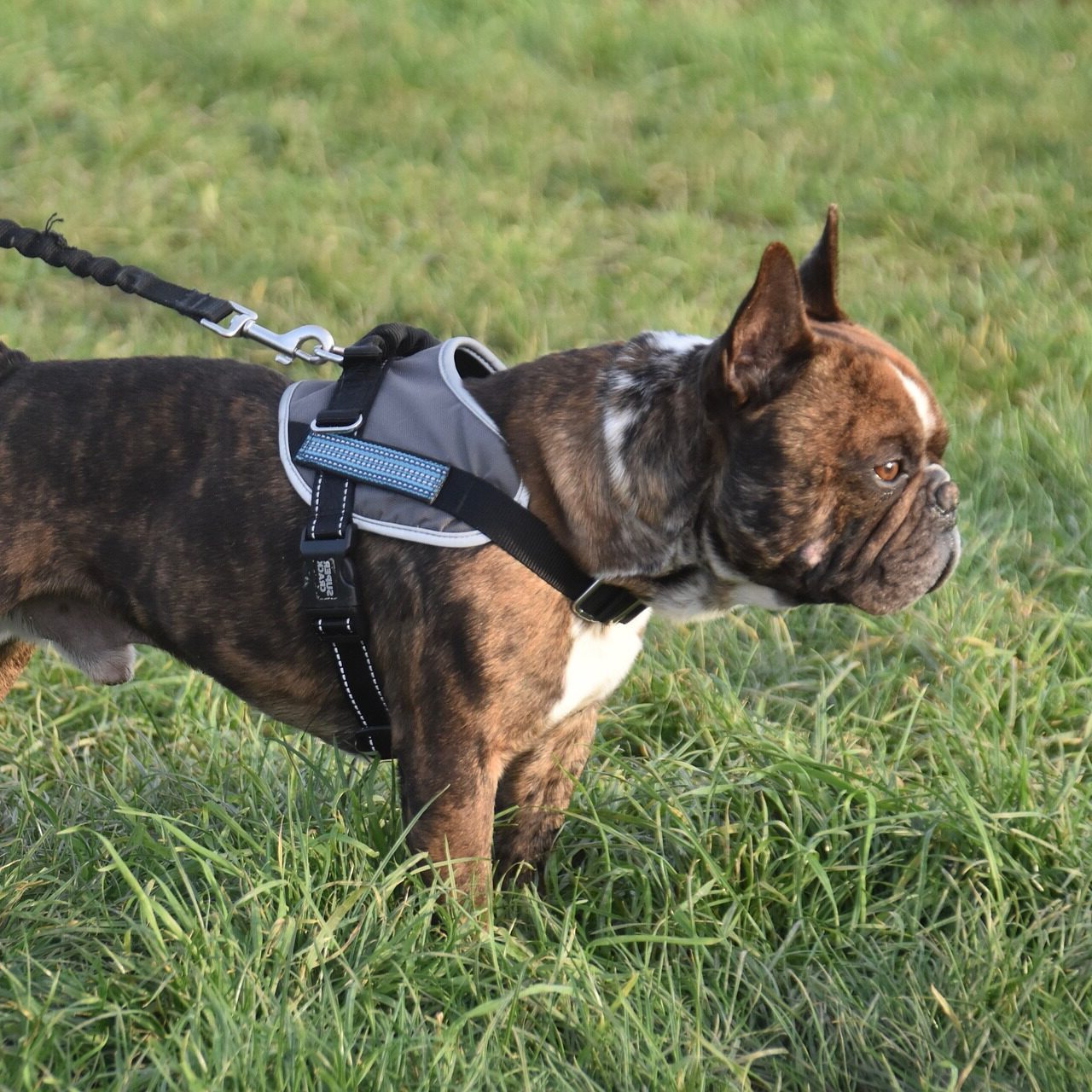
Change up your dog’s equipment:
Dogs are strong. If your dog is in danger of pulling you off your feet and dragging you to the ground, it’s important to consider safety while handling them.
Not all walking equipment is made alike. What your dog wears can make a big impact on their learning and strength.
Our favorite suggestion is a front-walk harness. Front-walk harnesses are not designed like a normal harness that hooks up in the back. Harnesses that are hooked up to the back of your dog can increase their pulling power.
A front-walk harness clips up to the front of the dog on their chest. This uses physics against the dog. Since dog’s have a lot of strength to pull forward when they are hooked up to their backs, when you switch the location, pulling results in them turning around to face you and away from the direction they were pulling.
While dogs can still pull in a front-walk harness, their power is greatly reduced. This makes management and safety easier for the human end of the leash. If you can stop moving and your dog cannot continue to go forward, you have a lot of options to keep them from getting into trouble. As stated above, dogs don’t tend to understand exactly how traffic works.
Making sure you have the right style and fit of front-walk harness is important. A harness that is fitted too loosely won’t do the job it needs to and dogs can be in danger of slipping out. Dogs come in many shapes and sizes, and so too do harnesses.
If you need help figuring out which style and fit of harness is appropriate for your dog, talk to your trainer about options. If you feel like your dog is in danger of pulling you over even while wearing a front-walk harness, or your dog doesn’t like wearing a harness, speak to your trainer about other options as well.
Pro-tip: Don’t let your dog wear their harness all the time. Many dogs will eventually chew on their harnesses if left unsupervised with them, especially young dogs and puppies. Harnesses are best used with supervision.
Leash training will take time, but the effort is worth it. These are just a few of our favorite tips to get your dog walking better with you.
If you are interested in learning more techniques to help your dog with leash manners and beyond, we can help. At Really Good Pets, we have helped countless people and their dogs enjoy their walks more.
Message us for your free initial consultation and start your journey to a well-behaved leash walking dog today.

